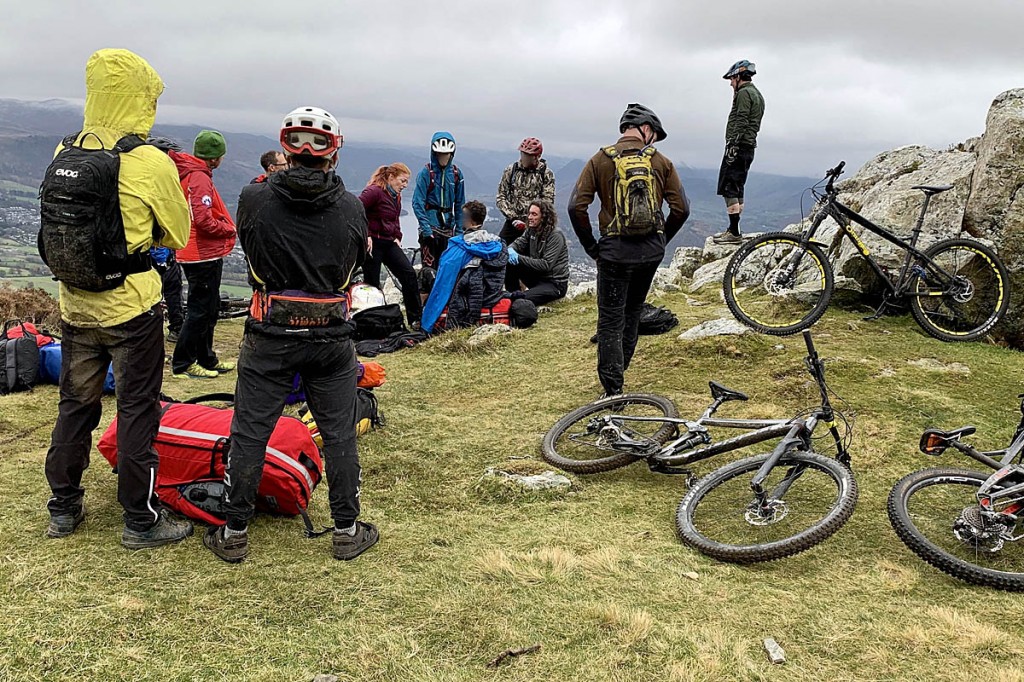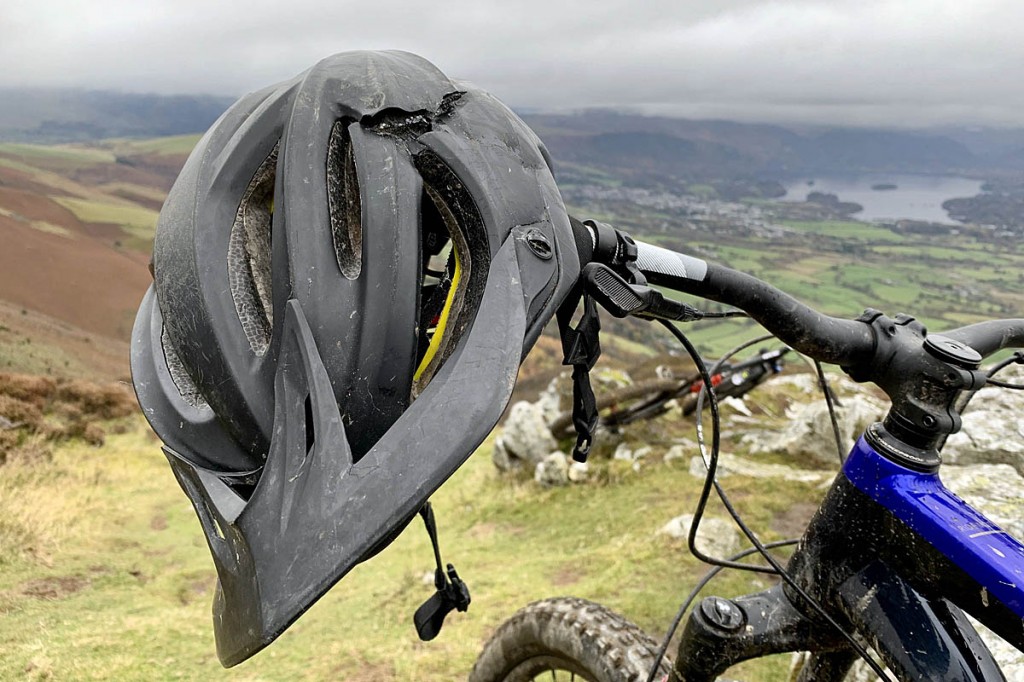A mountain biker used an inner tube to improvise a sling after he injured himself in a crash on a Lake District fell.
The 31-year-old knocked himself out and suffered a suspected broken collar bone in the incident on Skiddaw on Saturday.
Keswick Mountain Rescue Team was called out about 1.15pm.
A team spokesperson said the rider was descending from Skiddaw summit towards Carl Side when he came off his bike.
“The team dispatched a Land Rover which made its way up to the col behind Dodd with the expectation that it would be a slog up to the summit and a stretcher carry down,” the spokesperson said.
“However, after using an inner tube as an improvised sling to protect the injury, the casualty felt well enough to start walking down with his friends.
“The group were met at White Stones where one of the team paramedics carried out a thorough assessment of the patient before continuing the walk down to the Land Rover, a short distance away.”
He was then driven to Keswick, where his friends took him to hospital for further checks.
The rescue team said his helmet undoubtedly saved the man from serious injury in the crash.
The incident lasted 1¾ hours and involved 15 volunteers from Keswick MRT.


TH
17 November 2019Mountain bikers are a bloody nuisance when you're trying to walk up this footpath.
REB
17 November 2019Bikers have no legal right to be there in the first place - it is a FOOTPATH, not a bridle way.
Timbo
18 November 2019"Bikers have no legal right to be there in the first place - it is a FOOTPATH, not a bridle way."
Perhaps its been used for over 20 years with no challenge by the landowner. It may already be a restricted byway, just not recorded as such.
Andrew Prince
18 November 2019Spot on REB, it's a footpath end of.
Timbo
19 November 2019"it's a footpath end of"
Not 'end of' - higher rights can be gained through express or deemed dedication.
Dave Lakeland
22 November 2019Public rights of way are there to permit transit and stop landowners denying access, historically to enable people to go to work, church, school, market etc. These ways were largely in the valleys with a few routs going over the high ground and fells. Before the popularity of the Wordsworths and the beginnings of tourism the only people that ventured onto the fells where farmers, miners and smugglers. How people moved about on the fells was down to the job they were doing or purpose of travel and terrain: foot, horse back, pack horse, cart, sledge.
Covering a map in red or green dots is quite a recent thing and as far as the rough fell land goes often has little relation to what traffic a track has been historically used for (tracks to mines and quarries that would have been used by many forms of transport or in other parts of the country as an example canal towpaths that were used by horses are classed as footpaths ).
Yes, a footpath gives right of access on foot and it is an offence to deny that right but it's up to the land owner what forms of transport can be used on that land after that ( not the walker).
Somewhat ironic is that a lot of historically recent access to open country has been on the back of the mass trespass of Kinder Scout. The walker sings songs of rebellion and then promptly objects to every other user of the county side.